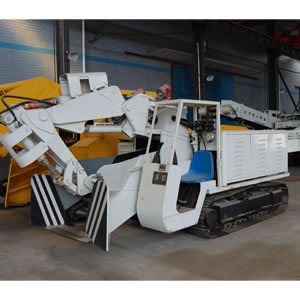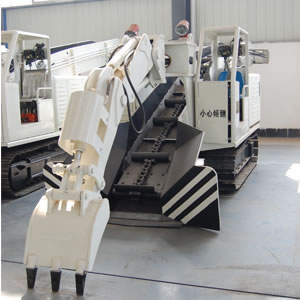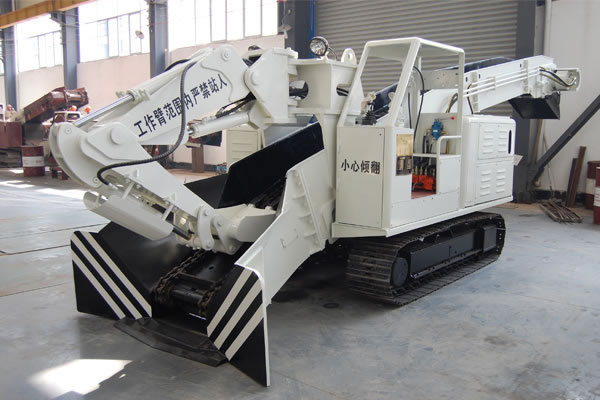About Us
- Company
- Customers
- Technical Highlights
- Advantages
- Company History
- Environmentally-friendly Facility
- Patents
- Quality Control
- R&D
- Mucking Loader Manual
- Mucking Loader Technical Description
- Mucking Loader Operation Description
- Mucking Loader Maintenance
- Mucking Loader Operation Notes
- Roadheader Manual
- Roadheader Technical Description
- Roadeheader Maintenance
- Roadheader Notes
- Roadheader Operating Method
- Mine Shuttle Car Manual
- Mine Shuttle Car Maintenance
- Mine Shuttle Car Operation
- Mine Shuttle Car Technical Description
- Mine Shuttle Car Notes
- Trolley Locomotive Maintenance
- Maintenance Manual of Drilling Jumbo
- Contact Us
Quality Control
We have been certified by ISO9000: 2008 quality management system. We've also acquired certificates of environmental management system and occupational health and safety management system. All our products have met the requirements of National Coal and Mine Security.
Coal Security Certificates
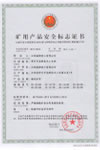
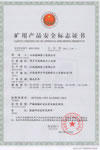
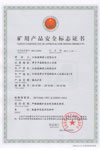
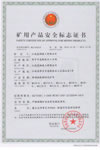
Concrete mixer truck
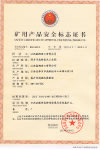
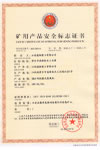
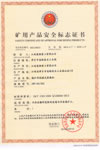
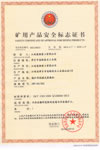
Material Purchasing
1. We only purchase materials from qualified suppliers, which need to offer production certificate and quality certificate. For materials used by coal mines, coal or mine security certificate is also needed.
3. All the materials need to go through strict check before they are used. We never use disqualified materials.
Major Process
1. Specialized tooling are used to control the process.
2. Record each inspection and keep all the original data.
Inspection
1. We adopt three steps of inspection: individual inspection, mutual inspection and specialized inspection.
2. Clearly mark and separate disqualified products.
On-site Management
1. Always keep the road smooth.
2. Keep the plant clean.
3. Keep the working piece in order.
4. Staff working in plant is required to wear personal safety equipment.
We strictly control the product quality from material purchasing, tooling control to major process, perform three steps of inspection and carry out 5S management. All we do is to make sure the products are qualified. According to our record, the machines produced by our company are 100% qualified.
Critical Quality Control Points
A. Traveling Part
1. Check the parallelism of two crawling belts.
2. Check the centrality of four wheels: weight supporting wheel, chain supporting wheel, direction guiding wheel and driving wheel.
3. Check the tightness of bolts.
4. Check if the belt droops confirming the technical requirement.
B. Driver’s Chamber Parts
1. Welding
(1) Check and see if it is secure enough.
(2) Check and see if the welding surface is smooth enough.
2. Oil tank welding
(1) Check if it is secure enough.
(2) Check if there is pore and slag.
(3) Check if it leaks.
3. Oil tank.
(1) Check if it has been acidified or phosphate.
(2) Check the inside dregs.
(3) Check the oil sealing.
4. Check the fan radiator for its motor.
C. Hydraulic Parts
1. Make sure all clean:
(1) the hydraulic parts.
(2) the pump valves.
(3) motor.
(4) cylinder.
(5) the oil tank of the radiator.
(6) the filter core.
2. Check the oil pipe joint.
(1) Check if it secures.
(2) Check if it leaks.
3. Check the operating system to see if it runs fast, unrestricted and consecutive.
D. Working Mechanism
1. Check the center hole.
(1) Check if it accords the drawing.
(2) Check if it fits the mounting dimension.
2. Check the flexibility.
3. Check if the collide would happen when each working arms run to its limits.
4. Check if there is the oil leakage when each is working under the maximum pressure.
5. Check if the working oil pipes rub with the transporting trough.
E. Complete Machine
1. Check the operation.
(1) Check if it runs normal.
(2) Check if it would get struck.
2. Check the operating stick.
(1) Check if it flexible.
(2) Check if it leaks.
3. After two hours start
(1) Check the oil temperature.
(2) Check the noise range.
4. Check all the oil pipes to see the layout and order.
Coal Security Certificates




Concrete mixer truck




Material Purchasing
1. We only purchase materials from qualified suppliers, which need to offer production certificate and quality certificate. For materials used by coal mines, coal or mine security certificate is also needed.
3. All the materials need to go through strict check before they are used. We never use disqualified materials.
Major Process
1. Specialized tooling are used to control the process.
2. Record each inspection and keep all the original data.
Inspection
1. We adopt three steps of inspection: individual inspection, mutual inspection and specialized inspection.
2. Clearly mark and separate disqualified products.
On-site Management
1. Always keep the road smooth.
2. Keep the plant clean.
3. Keep the working piece in order.
4. Staff working in plant is required to wear personal safety equipment.
We strictly control the product quality from material purchasing, tooling control to major process, perform three steps of inspection and carry out 5S management. All we do is to make sure the products are qualified. According to our record, the machines produced by our company are 100% qualified.
Critical Quality Control Points
A. Traveling Part
1. Check the parallelism of two crawling belts.
2. Check the centrality of four wheels: weight supporting wheel, chain supporting wheel, direction guiding wheel and driving wheel.
3. Check the tightness of bolts.
4. Check if the belt droops confirming the technical requirement.
B. Driver’s Chamber Parts
1. Welding
(1) Check and see if it is secure enough.
(2) Check and see if the welding surface is smooth enough.
2. Oil tank welding
(1) Check if it is secure enough.
(2) Check if there is pore and slag.
(3) Check if it leaks.
3. Oil tank.
(1) Check if it has been acidified or phosphate.
(2) Check the inside dregs.
(3) Check the oil sealing.
4. Check the fan radiator for its motor.
C. Hydraulic Parts
1. Make sure all clean:
(1) the hydraulic parts.
(2) the pump valves.
(3) motor.
(4) cylinder.
(5) the oil tank of the radiator.
(6) the filter core.
2. Check the oil pipe joint.
(1) Check if it secures.
(2) Check if it leaks.
3. Check the operating system to see if it runs fast, unrestricted and consecutive.
D. Working Mechanism
1. Check the center hole.
(1) Check if it accords the drawing.
(2) Check if it fits the mounting dimension.
2. Check the flexibility.
3. Check if the collide would happen when each working arms run to its limits.
4. Check if there is the oil leakage when each is working under the maximum pressure.
5. Check if the working oil pipes rub with the transporting trough.
E. Complete Machine
1. Check the operation.
(1) Check if it runs normal.
(2) Check if it would get struck.
2. Check the operating stick.
(1) Check if it flexible.
(2) Check if it leaks.
3. After two hours start
(1) Check the oil temperature.
(2) Check the noise range.
4. Check all the oil pipes to see the layout and order.
Related Products

 English
English Русский
Русский Español
Español Français
Français Português
Português العربية
العربية
